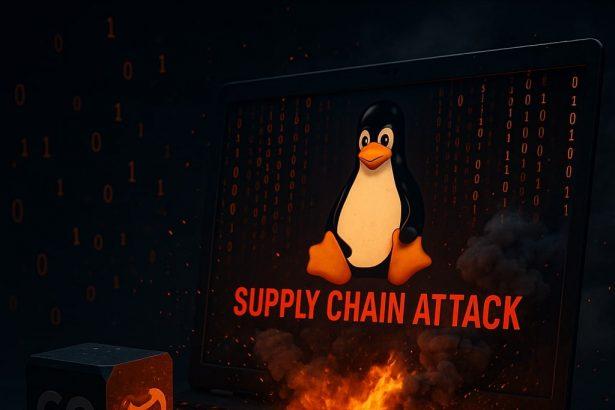In an incident that highlights the deepening crisis of trust in open-source software, security researchers have uncovered a destructive campaign where malicious Go modules were quietly used to wipe Linux systems. This supply chain attack didn’t just target computers—it struck at the very faith developers place in shared code.
What Really Happened?
The breach was subtle, insidious, and devastating. At first glance, three new Go modules—prototransform, go-mcp, and tlsproxy—looked like ordinary packages any developer might pull into a project. But lurking beneath the surface was a payload designed not to steal data or spy on users—but to annihilate.
Once included in a project and executed, these modules connected to a remote server to download an additional payload. The result? Complete disk destruction. In technical terms, the malware overwrote the contents of /dev/sda—the primary disk on Linux machines—leaving them unbootable and permanently damaged.
This wasn’t a mistake. It was premeditated digital sabotage.
An Exploit of Trust in the Go Ecosystem
Go’s module system is both a blessing and a curse. On one hand, it promotes openness, allowing developers to share and reuse code effortlessly. On the other hand, it lacks a centralized authority to verify the legitimacy of new packages. Anyone can publish a module. Anyone can import one.
That’s the chink in the armor the attackers found—and exploited.
By uploading these modules to public repositories and linking them to GitHub-hosted projects, the threat actors bypassed many common security checks. To the naked eye, the packages looked legitimate. And that’s what makes this attack so terrifying: it used the very openness of open-source development against itself.
Obfuscation and Deception
Security firm Socket, which first flagged the issue, reported that the malicious code was deeply obfuscated. Strings were encoded, logic was split into segments, and runtime evaluation masked the module’s true behavior. This is the type of threat that slips past automated scanners, flying under the radar until it’s too late.
Developers who imported these modules likely didn’t realize what had happened until their systems were already compromised.
Fallout and Reactions
The attack didn’t target major enterprises or government institutions—it hit where developers least expected it: in everyday projects. While the full scope of the damage remains unclear, the mere presence of disk-wiping malware in a public Go module is cause for serious concern.
“It’s not just about code anymore,” said one researcher familiar with the case. “This is about control. It’s about the trust developers have in the tools they use—and how easily that trust can be weaponized.”
Why This Attack Matters More Than You Think
Most cyberattacks aim for financial gain. This one didn’t. Instead, it inflicted maximum damage for seemingly no benefit. That’s a chilling shift. It signals a new breed of attackers—ones motivated by disruption, ideology, or perhaps even chaos.
It also demonstrates that supply chain attacks have evolved far beyond stolen credentials or hijacked updates. Now, malicious actors can sow destruction by simply writing and uploading a piece of code—and waiting for someone to use it.
What Can Be Done to Stop This?
The incident has sparked calls for reform in how package ecosystems are managed. Recommendations from experts include:
- Module Auditing: Before importing third-party code, developers should inspect the source—even when it comes from reputable-looking projects.
- Automated Sandboxing: Security platforms could run modules in controlled environments to detect behavior like disk access or remote connections.
- Code Signing and Verification: Encouraging or requiring cryptographic signing of packages to ensure they come from verified authors.
- Community Watchdogs: The open-source community can work collectively to flag suspicious packages before they spread.
But perhaps the most important defense is awareness. As developers and DevOps teams, the burden is increasingly on us to question everything we integrate.
A Glimpse Into the Future?
If this event is any indication, future attacks will likely be stealthier, more targeted, and more destructive. And the most effective ones won’t come through zero-day exploits or sophisticated ransomware—they’ll come through the package manager.
As we march deeper into a world built on open-source infrastructure, the battlefront is no longer just at the perimeter. It’s at the command line. In the import statements. In the dependencies we barely think about.
This time, it was Linux developers. Next time, it could be anyone.
Stay vigilant. Stay skeptical. In the new era of cyberwarfare, even your tools can turn against you.




